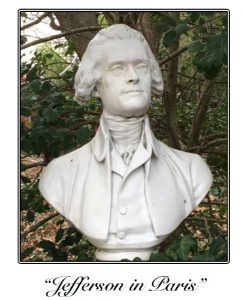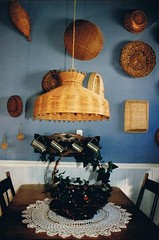Happy Friday! It has been a busy week for preservation news.
 1. The French and Indian War Foundation invites you to an afternoon of Colonial history on Sunday, March 19 between 2-5 PM in the Reception Room at the Museum of the Shenandoah Valley, 901 Amherst Street, Winchester, Virginia. This is a free event with wine and hors d’oevres. Book signings of “On The Town Celebrating James Wood & The Founding of Winchester in the Shenandoah Valley of Virginia” by Wilbur S. Johnston and Braddock’s Road Historical Atlas by Norman Baker will take place all afternoon.
1. The French and Indian War Foundation invites you to an afternoon of Colonial history on Sunday, March 19 between 2-5 PM in the Reception Room at the Museum of the Shenandoah Valley, 901 Amherst Street, Winchester, Virginia. This is a free event with wine and hors d’oevres. Book signings of “On The Town Celebrating James Wood & The Founding of Winchester in the Shenandoah Valley of Virginia” by Wilbur S. Johnston and Braddock’s Road Historical Atlas by Norman Baker will take place all afternoon.
Dr. Carl Ekberg will present a lecture and slide presentation on “Thomas Jefferson in Paris” at 3 PM. Dr. Ekberg is a retired history professor from Illinois State University who now resides in Winchester. He has traced the footsteps of Jefferson in Paris for the last 25 years. In 2014, he received La Médaille d’Or award from the French Ambassador for his numerous outstanding publications on the French Colonial period.
For questions on this event, please call 703-307-6696.
2. The National Fund for Sacred Places is a program of the National Trust for Historic Preservation in collaboration with Partners for Sacred Places that provides training, planning grants, and capital grants from $50,000 to $250,000 to congregations of all faiths for rehabilitation work on their historic facilities.
Congregations are urged to submit their letter of intent by May 1 for the Fund for Sacred Places for projects such as:
- Urgent repair needs that are integral to life safety.
- Projects that improve the usability or ADA accessibility of the property.
- Renovation projects for important community outreach.
Visit www.FundforSacredPlaces.org for more details, including eligibility requirements, guidelines, and online application.
3. The National Trust for Historic Preservation is also taking applications for their National Preservation Awards until 11:59 p.m. ET on Wednesday, March 1. Nominate a deserving project, individual, or organization for a 2017 National Preservation Award – see the full list of categories, eligibility requirements, and online submission forms at the National Trust’s website.
4. Late breaking news from the National Trust – two grant deadlines have been extended until March 15! Learn more about the Johanna Favrot (matching grant for planning activities and education efforts focused on preservation primarily for public or nonprofit entities) and Cynthia Woods Mitchell (matching grant for Organizational Level Forum members or Main Street America members of the National Trust for preservation, restoration, and interpretation of historic interiors) funds. Grant funding ranges from $2,500–$10,000.
 5. Friday Photos continues to add to our digital Holiday House Tour collections with 35 images this week, focusing on 320 South Cameron Street (the Parish-McIlwee House, decorated in a Victorian manner) and 312 South Cameron Street (former parsonage of the Methodist Episcopal Church, renovated into offices in 1984), and 501 South Loudoun Street (the Sitler House, an early log home built by Mathias Sitler between 1780-1797).
5. Friday Photos continues to add to our digital Holiday House Tour collections with 35 images this week, focusing on 320 South Cameron Street (the Parish-McIlwee House, decorated in a Victorian manner) and 312 South Cameron Street (former parsonage of the Methodist Episcopal Church, renovated into offices in 1984), and 501 South Loudoun Street (the Sitler House, an early log home built by Mathias Sitler between 1780-1797).
Catch the new images at the top of the photostream, or at the end of the Holiday House Tours album. Happy viewing!
Bonus Information: More updates on the historic tax credits in Virginia and for the federal program have come in from Preservation Virginia. Catch their updates on the two year sunset successfully added to to HB 2460 and SB 1034 and the introduction of the Historic Tax Credit Improvement Act to Congress in their archives.


